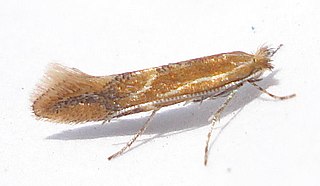Related Research Articles

Willem-Alexander is King of the Netherlands, having acceded to the throne following his mother's abdication in 2013.

The greater white-fronted goose is a species of goose related to the smaller lesser white-fronted goose. It is named for the patch of white feathers bordering the base of its bill, in fact albifrons comes from the Latin albus "white" and frons "forehead". In Europe it has been known as the white-fronted goose; in North America it is known as the greater white-fronted goose, and this name is also increasingly adopted internationally. Even more distinctive are the salt-and-pepper markings on the breast of adult birds, which is why the goose is colloquially called the "specklebelly" in North America.

The little tern is a seabird of the family Laridae. It was formerly placed into the genus Sterna, which now is restricted to the large white terns. The genus name is a diminutive of Sterna, "tern". The specific albifrons is from Latin albus, "white", and "frons", forehead. The former North American and Red Sea S. a. saundersi subspecies are now considered to be separate species, the least tern and Saunders's tern.

The following is a list of public holidays in Romania. According to Romanian law, Romania had 51 public holidays as of 2011, which cover 14% of the days of the year in the country.

White-fronted capuchin can refer to any of a number of species of gracile capuchin monkey which used to be considered as the single species Cebus albifrons. White-fronted capuchins are found in seven different countries in South America: Bolivia, Brazil, Colombia, Venezuela, Ecuador, Peru, and Trinidad and Tobago.

The Limacodidae or Eucleidae are a family of moths in the superfamily Zygaenoidea or the Cossoidea; the placement is in dispute. They are often called slug moths because their caterpillars bear a distinct resemblance to slugs. They are also called cup moths because of the shape of their cocoons.
Squalus albifrons, the eastern highfin spurdog, is a dogfish described in 2007. It is a member of the family Squalidae, found on the continental shelf off Queensland, Australia, at depths between 220 and 510 m. The length of the longest specimen measured is 65 cm (26 in). Its reproduction is ovoviviparous.

The thick-billed weaver, or grosbeak weaver, is a distinctive and bold species of weaver bird that is native to the Afrotropics. It belongs to the monotypic genus Amblyospiza and subfamily Amblyospizinae.

The long-tailed reed finch is a species of South American bird in the tanager family Thraupidae. It is the only member of its genus Donacospiza.

The white-fronted chat is a species of bird in the honeyeater family Meliphagidae native to southern Australia. The male has a white face bordered by a black breast band. It is insectivorous.

The Ecuadorian capuchin, or Ecuadorian white-fronted capuchin is a species of gracile capuchin monkey of the family Cebidae. It was formerly classified as a subspecies of the white-fronted capuchin . Mittermeier and Rylands elevated it to a separate species in 2013. The primary physical distinction between C. albifrons and C. aequatorialis is their coloration. Due to low density and distribution researchers have not been able to make a confident molecular genetic assessment of the C. aequatorialis population, but assign it species status based on geographical isolation, morphological characteristics, and the phylogenetic species concept. The location range of the Ecuadorian Capuchin is from Western lowland Ecuador to North West Peru. The conservation status of the Ecuadorian Capuchin was originally near threatened but was revised in 2008 by the IUCN to critically endangered due to the population's rapid decline. Anthropogenic factors such as habitat fragmentation from rapid deforestation, creation of agricultural lands, and persecution from farmers are to blame for the species' critically endangered status.

Phyllonorycter is a genus of moths in the family Gracillariidae.

Gracile capuchin monkeys are capuchin monkeys in the genus Cebus. At one time all capuchin monkeys were included within the genus Cebus. In 2011, Jessica Lynch Alfaro et al. proposed splitting the genus between the robust capuchin monkeys, such as the tufted capuchin, and the gracile capuchins. The gracile capuchins retain the genus name Cebus, while the robust species have been transferred to Sapajus.
Latoia is a genus of moths in the family Limacodidae. It was described by Félix Édouard Guérin-Méneville in 1844.

De Prins van Oranje is a tower mill in Bredevoort, Gelderland, Netherlands which was built in 1870 and has been restored to working order. The mill is listed as a Rijksmonument.
Gadessa albifrons is a moth in the family Crambidae. It was described by Frederic Moore in 1886. It is found in Sri Lanka.
The Macroheterocera are a well supported clade of moths that are closely related to butterflies and other macro-moths.
References
- ↑ De Prins, J.; De Prins, W. (2017). "Latoia albifrons Guérin-Méneville, 1844". Afromoths. Retrieved November 12, 2017.